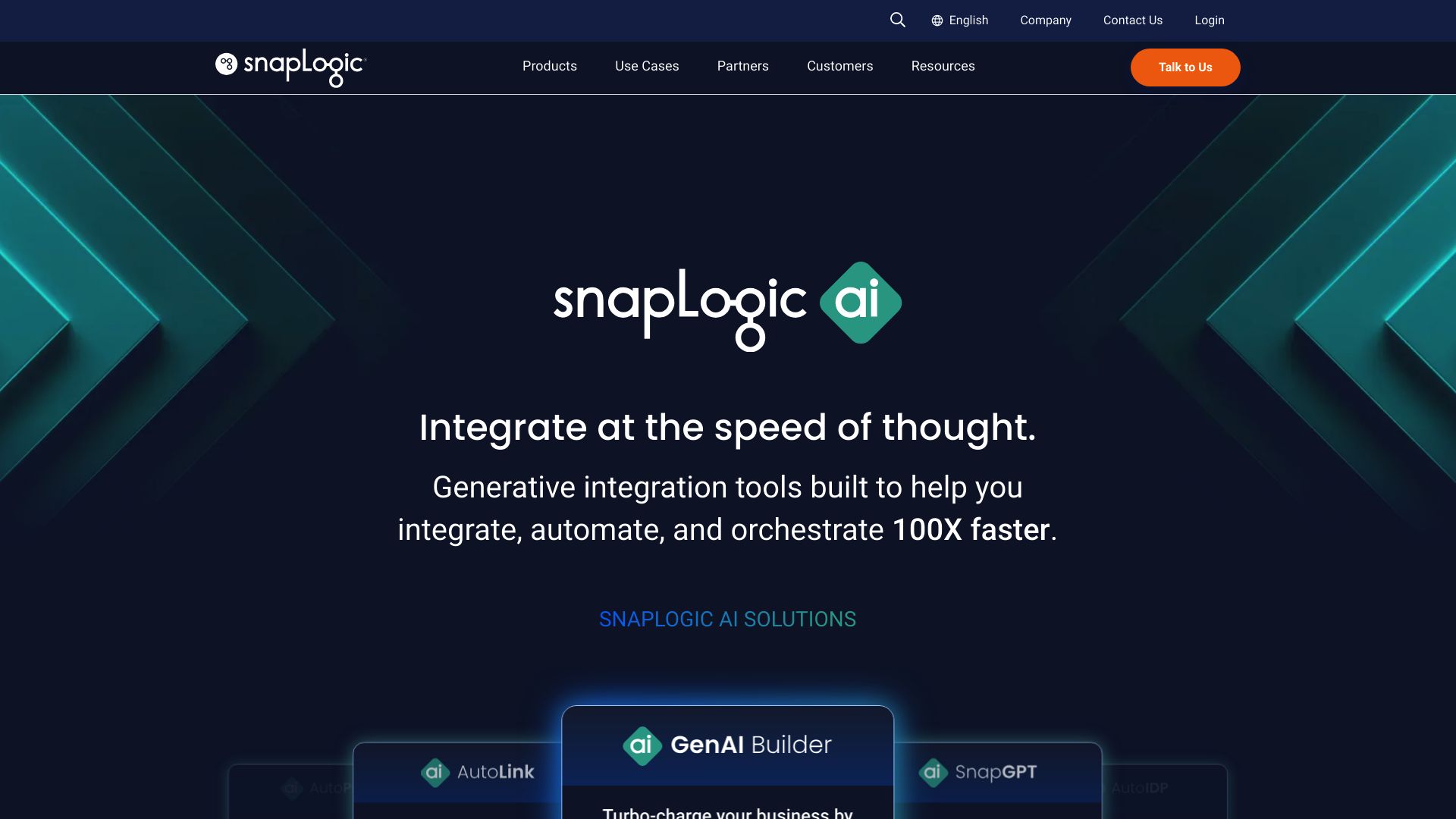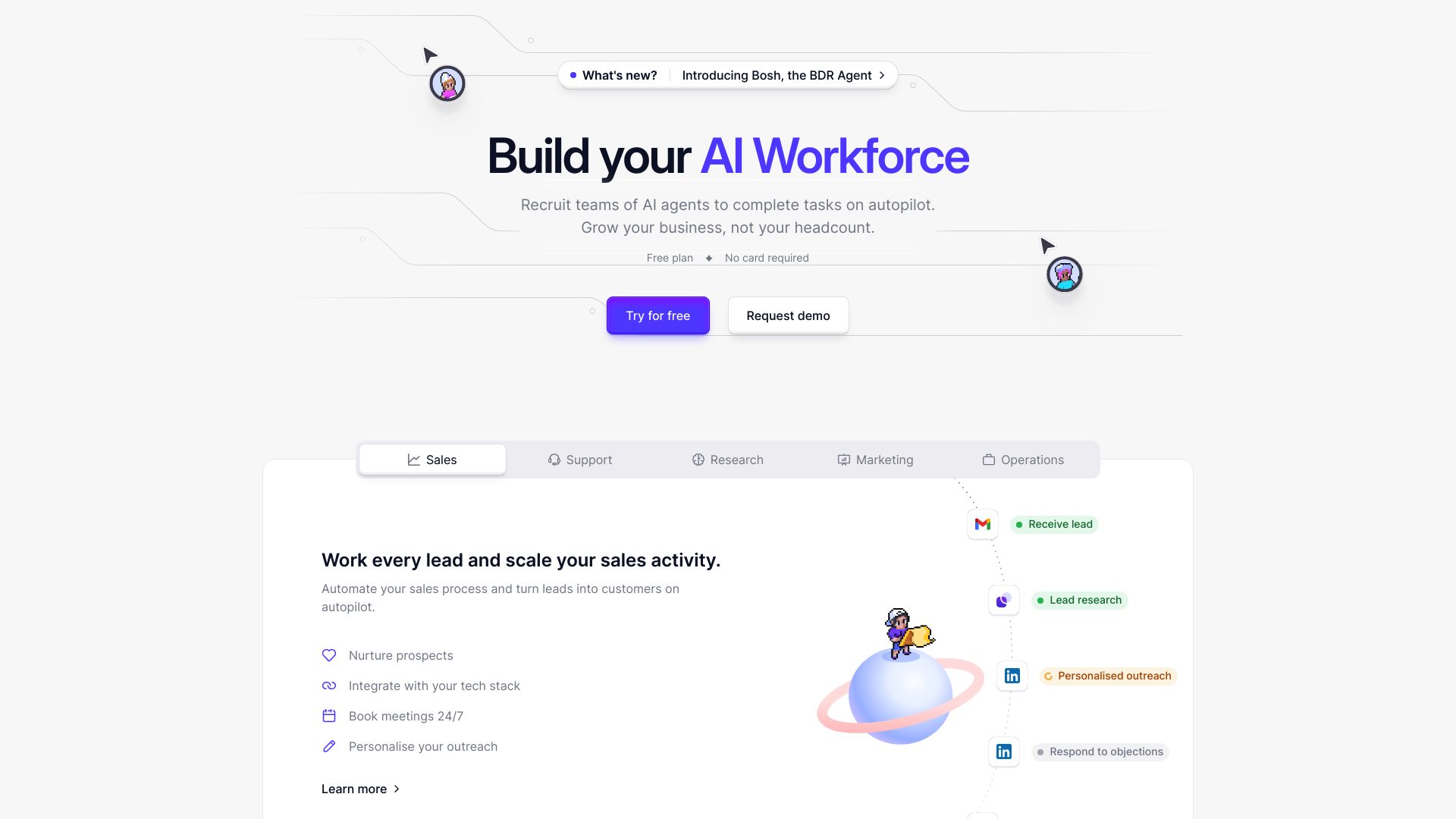SnapLogic AI vs. Relevance AI: Comparing Enterprise Integration and LLM Development
AI-powered platforms revolutionize how businesses handle data integration, application connectivity, and intelligent automation. SnapLogic AI vs. Relevance AI, and SmythOS offer unique solutions to these challenges, each with distinct strengths and capabilities. This comparison delves into the core features, use cases, and potential limitations of these platforms, helping you determine which best suits your organization’s needs. We’ll explore how SnapLogic AI excels in enterprise data integration, Relevance AI focuses on rapid LLM-powered tool development, and SmythOS provides a comprehensive suite for AI agent creation and deployment. By examining their approaches to visual building, AI capabilities, scalability, and integration support, you’ll gain valuable insights to guide your decision-making process in adopting AI technology for your business.
snapLogic AI Overview
snapLogic AI empowers businesses to streamline data integration and application connectivity through an AI-driven platform. The Intelligent Integration Platform (IIP) simplifies complex IT projects by automating design, development, deployment, and maintenance across diverse environments.


SnapLogic’s visual builder interface enables both technical experts and citizen integrators to create sophisticated data pipelines without extensive coding. The platform leverages AI, including the SnapGPT and GenAI Builder tools, to accelerate integration tasks and enable no-code AI application development. This approach democratizes access to powerful integration capabilities, allowing a wider range of users to contribute to digital transformation initiatives.
SnapLogic’s visual builder interface enables both technical experts and citizen integrators to create sophisticated data pipelines without extensive coding.
Key features of snapLogic AI include AI-powered recommendations for pipeline creation, self-service integration tools, and support for diverse data types and sources. The platform’s scalability, facilitated by cloud infrastructure, allows businesses to adapt their integration processes as needs evolve. SnapLogic also prioritizes security and compliance, offering features like data encryption and OAuth support to protect sensitive information.
While snapLogic AI offers robust capabilities for many integration scenarios, it may not be the ideal solution for all use cases. The platform’s strength in data integration and enterprise connectivity may come at the cost of specialized features for niche applications. Additionally, while the no-code approach simplifies many tasks, power users might find limitations in extreme customization scenarios.
SnapLogic integrates with a wide array of systems and tools, supporting connections to popular SaaS applications, on-premises systems, and cloud platforms. This versatility positions snapLogic AI as a comprehensive solution for organizations seeking to unify their data ecosystem and drive efficiency through intelligent automation.
Relevance AI Overview
Relevance AI offers a low-code platform for building and deploying Large Language Model (LLM)-powered AI agents and tools. The platform caters to users seeking to integrate advanced AI capabilities into their workflows without extensive programming skills.
Relevance AI emphasizes rapid development, typically enabling users to create AI agents and tools within minutes. The platform’s multi-provider support allows integration and switching between various LLM providers, ensuring flexibility as AI technologies evolve.
Relevance AI offers a low-code platform for building and deploying Large Language Model (LLM)-powered AI agents and tools… without extensive programming skills.


Key features of Relevance AI include a built-in vector store for efficient text storage and retrieval, enhancing data handling capabilities. The platform’s ’Magic Deployment’ offers a fully managed service for deploying LLM features, alleviating concerns about infrastructure and scaling. For developers, Relevance AI provides a type-safe and flexible SDK, facilitating the construction of applications with LLM features.
The platform supports the creation of customizable AI assistants capable of understanding user input, learning from data, and performing tasks autonomously. It also offers a variety of AI-powered tools for data analysis, information retrieval, and task automation. Ready-to-use templates for common tasks are available, which users can customize to fit specific needs.
The platform supports the creation of customizable AI assistants capable of understanding user input, learning from data, and performing tasks autonomously.
While Relevance AI offers significant capabilities, users should consider potential limitations. The platform’s low-code approach, while beneficial for rapid development, may restrict advanced customization options for highly specialized use cases. Additionally, as with many AI platforms, the quality of results heavily depends on the data input and the specific LLM providers integrated.
Relevance AI positions itself as a solution for democratizing access to advanced AI technologies. The platform aims to enable businesses to enhance workflows and achieve greater efficiency through automation and intelligent data handling. However, users should carefully evaluate whether the platform’s capabilities align with their specific AI development needs and long-term scalability requirements.
Feature Comparison
SnapLogic AI and Relevance AI offer distinct approaches to AI-powered integration and agent building. SnapLogic AI excels in enterprise-grade data integration, providing robust tools for connecting various systems and applications. Its visual interface simplifies complex integration tasks, making it accessible to both technical and non-technical users. SnapLogic’s AI capabilities, including SnapGPT, enhance automation in data pipeline creation and management.
Relevance AI, on the other hand, focuses on rapid development of LLM-powered AI agents and tools. Its low-code platform enables quick creation of custom AI solutions, often within minutes. Relevance AI’s strength lies in its flexibility, allowing integration with multiple LLM providers and offering a built-in vector store for efficient data handling.
A key difference lies in their core components. SnapLogic AI provides extensive support for data integration, including connectors for various enterprise systems and APIs. It offers strong capabilities in data processing, transformation, and workflow automation. Relevance AI, while less focused on traditional data integration, excels in creating AI agents for tasks like natural language processing and autonomous decision-making. In terms of security, both platforms offer data encryption and authentication mechanisms, but SnapLogic’s enterprise focus results in more comprehensive security features, including detailed access controls and compliance support.
Feature Comparison Table
| snapLogic AI | Relevance AI | SmythOS | |
|---|---|---|---|
| CORE FEATURES | |||
| Memory & Context | ❌ | ✅ | ✅ |
| Explainability & Transparency | ✅ | ❌ | ✅ |
| Multi-Agent Collaboration | ✅ | ❌ | ✅ |
| Audit Logs for Analytics | ✅ | ❌ | ✅ |
| Work as Team | ✅ | ❌ | ✅ |
| SECURITY | |||
| Constrained Alignment | ✅ | ❌ | ✅ |
| IP Control | ✅ | ❌ | ✅ |
| COMPONENTS | |||
| Foundation AIs | ❌ | ✅ | ✅ |
| Huggingface AIs | ❌ | ❌ | ✅ |
| Zapier APIs | ❌ | ❌ | ✅ |
| Classifiers | ❌ | ✅ | ✅ |
| Data Lakes | ✅ | ❌ | ✅ |
| DEPLOYMENT OPTIONS (EMBODIMENTS) | |||
| Staging Domains | ❌ | ✅ | ✅ |
| Production Domains | ❌ | ✅ | ✅ |
| Deploy as Site Chat | ❌ | ✅ | ✅ |
| Deploy as GPT | ❌ | ✅ | ✅ |
| DATA LAKE SUPPORT | |||
| Hosted Vector Database | ❌ | ✅ | ✅ |
| Sitemap Crawler | ❌ | ❌ | ✅ |
| YouTube Transcript Crawler | ❌ | ✅ | ✅ |
| URL Crawler | ❌ | ❌ | ✅ |
Best Alternative to snapLogic AI and Relevance AI
SmythOS stands out as the superior alternative to snapLogic AI and Relevance AI, offering a comprehensive platform for building and deploying AI agents. Our solution combines the best of both worlds, providing enterprise-grade integration capabilities and rapid AI agent development in a user-friendly package.
We excel in ease of use, boasting a visual drag-and-drop interface that simplifies complex AI workflows. This approach democratizes AI development, allowing both technical and non-technical users to create sophisticated agents without extensive coding knowledge. Our platform supports a wide array of AI models and integrations, enabling users to leverage cutting-edge technologies from providers like OpenAI, Anthropic, and Hugging Face.
SmythOS offers unparalleled flexibility in deployment options. Users can deploy their AI agents as APIs, chatbots, scheduled tasks, or even integrate them into popular platforms like ChatGPT.
SmythOS offers unparalleled flexibility in deployment options. Users can deploy their AI agents as APIs, chatbots, scheduled tasks, or even integrate them into popular platforms like ChatGPT. This versatility ensures that AI solutions can be seamlessly incorporated into existing systems and workflows, maximizing their impact across various use cases.
Our platform shines in its ability to handle complex, multi-agent collaborations. While snapLogic AI focuses on data integration and Relevance AI specializes in LLM-powered tools, SmythOS combines these strengths and goes further. We enable the creation of autonomous agent teams that can work together on sophisticated tasks, dramatically expanding the scope of what’s possible with AI automation.
Security and scalability are at the forefront of our design. SmythOS provides robust data encryption, OAuth support, and IP control features, ensuring that enterprise-level security requirements are met. Our platform scales effortlessly to accommodate growing demands, making it an ideal choice for businesses of all sizes, from startups to large corporations. With SmythOS, users gain a powerful, all-in-one solution that surpasses the capabilities of both snapLogic AI and Relevance AI, driving innovation and efficiency across industries.
Conclusion
SnapLogic AI, Relevance AI, and SmythOS each offer unique approaches to AI-powered integration and agent building. SnapLogic AI excels in enterprise-grade data integration, while Relevance AI focuses on rapid development of LLM-powered tools. However, SmythOS stands out as the superior choice for businesses seeking a comprehensive, user-friendly AI development platform.
SmythOS combines the strengths of both competitors and surpasses them with its extensive feature set. Our platform offers a visual builder and no-code editor, making AI development accessible to users of all skill levels. We provide robust support for multimodal interactions, problem-solving capabilities, and multi-agent collaboration, enabling the creation of sophisticated AI solutions for diverse business needs.
Unlike its competitors, SmythOS offers unparalleled flexibility in deployment options. We allow you to deploy AI agents as APIs, webhooks, chatbots, or scheduled tasks, and even integrate them with popular platforms like ChatGPT. Our platform also prioritizes security and scalability, ensuring that your AI solutions can grow with your business while maintaining data integrity.
To experience the future of AI development, create a free SmythOS account today. Explore our diverse range of AI-powered agent templates and 300,000+ seamless integrations to jumpstart your AI journey. With SmythOS, you’ll revolutionize your workflow and unlock the full potential of AI for your business.
Last updated:
Disclaimer: The information presented in this article is for general informational purposes only and is provided as is. While we strive to keep the content up-to-date and accurate, we make no representations or warranties of any kind, express or implied, about the completeness, accuracy, reliability, suitability, or availability of the information contained in this article.
Any reliance you place on such information is strictly at your own risk. We reserve the right to make additions, deletions, or modifications to the contents of this article at any time without prior notice.
In no event will we be liable for any loss or damage including without limitation, indirect or consequential loss or damage, or any loss or damage whatsoever arising from loss of data, profits, or any other loss not specified herein arising out of, or in connection with, the use of this article.
Despite our best efforts, this article may contain oversights, errors, or omissions. If you notice any inaccuracies or have concerns about the content, please report them through our content feedback form. Your input helps us maintain the quality and reliability of our information.
